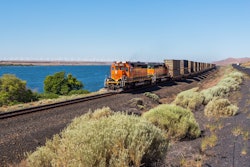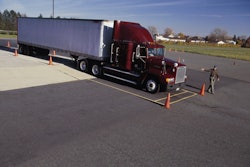American Trucking Associations says a model broker-shipper contract developed by the National Industrial Transportation League and the Transportation Intermediaries Association could have an unfavorable impact on motor carriers. For example, any broker who signs the NIT League-TIA model contract agrees that it will require motor carriers in subsequent broker-carrier agreements to accept terms such as unilateral motor carrier indemnification of both brokers and shippers for all claims or losses.
California Air Resources Board’s order regulating transport refrigeration unit diesel engines went into effect in December. The rule establishes new in-use emission performance standard categories for transport refrigeration units (TRUs) and TRU gen-set engines. For more information, visit this site.
Wal-Mart Stores Inc. is the target of a class action lawsuit filed in the U.S. district court in Little Rock, Ark., contending that the retailer discriminates against African Americans seeking jobs as truck drivers at its distribution centers in 12 southern states. Wal-Mart has denied the allegation.
U.S. Court of Appeals for the Seventh Circuit reversed a lower court’s finding of retaliation by K&R Express Systems against a Yugoslavia-born dockworker who had lodged complaints with the Equal Employment Opportunity Commission and in court against the carrier, alleging discrimination. (Case Nos. 03-2038, 03-2070 & 03-3011)
Q I understand the Supreme Court recently issued a decision that might affect the ability of intermodal carriers to limit their liability for cargo loss or damage. We are an intermodal drayage company. How does this decision affect us?
A The decision you cite, Norfolk Southern vs. Kirby, was handed down by the Supreme Court on Nov. 9, 2004, and is the first decision in a long time in which the Supreme Court has considered surface carrier liability for cargo loss or damage in the context of international, multimodal moves. Typically an international forwarder, a non-vessel operating common carrier (NVOCC) or a steamship line undertakes to arrange for door-to-door service – and then retains the domestic and overseas carriers (including rail, motor and water) necessary to complete the move.
Often, an ocean bill of lading is issued that shows the inland pickup or delivery point as the origin or destination, and the bill of lading contains a so-called “Himalaya Clause” that purports to extend the applicable ocean limitation of cargo liability to the surface portion of the move. That limitation under COGSA – the Carriage of Goods by Sea Act – is $500 per package.
In addition, railroads like Norfolk Southern and intermodal motor carriers often negotiate further limitations of liability with the international forwarder or the initiating carrier who put the multi-move together. This second limitation of liability most often is set forth in a contract between the surface carrier and the intermediary or lead contracting carrier.
In Kirby, Norfolk Southern appealed an 11th Circuit decision that would have destroyed the surface carrier’s ability to limit its liability for cargo loss and damage under these two established principles. The lower court found Norfolk Southern liable for the full value of a cargo loss notwithstanding a Himalaya Clause in the ocean bill and a further reduced limitation of liability negotiated between Norfolk Southern and the intermediary.
Kirby is important because if the lower court’s decision had prevailed, motor and rail carriers would have been left with potentially unlimited exposure on ex-water moves – notwithstanding the intent of the parties and their best efforts to provide simplified freight all kinds, or FAK, pricing in return for reduced limits of liability.
Fortunately, the Supreme Court was not persuaded by the plaintiff’s efforts to blur the realities of intermodal transportation. The court affirmed that a limitation of liability, when appropriately set forth in a through ocean bill, could extend to the subcontracting motor and rail carriers that provided port-to-door service or door-to-port service. The Court also recognized that the intermediary that puts together an intermodal through movement acts as the agent for the shipper and accordingly can bind the shipper by contract to further limitations of liability.
Because this was a U.S. Supreme Court ruling, motor and rail carriers now have current governing precedent that validates the reality of the way that multimodal moves are negotiated. Typically an international shipper negotiates with a prime contractor for a through movement at a sum certain based upon an agreement of the allocation of the risk of loss. The through bill of lading then can allocate how all or part of that assumed risk of loss is apportioned under COGSA to the ocean and/or motor and rail carriers. If the intermediary wishes to further reduce the cost of transportation by assuming for itself and/or its shipper a greater risk of loss, it can negotiate with rail and motor interests for price service options that further reduce freight costs in return for lower limits of liability for the carrier.
Importantly, you must recognize that the holding in Kirby has no self-executing protection for intermodal motor carriers. It merely provides that your exposure for unlimited cargo loss and damage claims on ex-water shipments can be limited effectively. You cannot count on the presence of a Himalaya Clause to protect you. At best, a carrier can benefit from a per-package limitation, and it may or may not even appear in the through bill. But it is of no help when the ocean bill is limited to a port-to-port move or if there are so many packages on each container that the $500 per-package limitation is still a hefty financial burden. Like the railroad in Kirby, drayage firms can and must take care to establish by contract their own limits of cargo liability on multimodal moves to avoid full cargo liability for the often unknown contents of the intermodal container.








